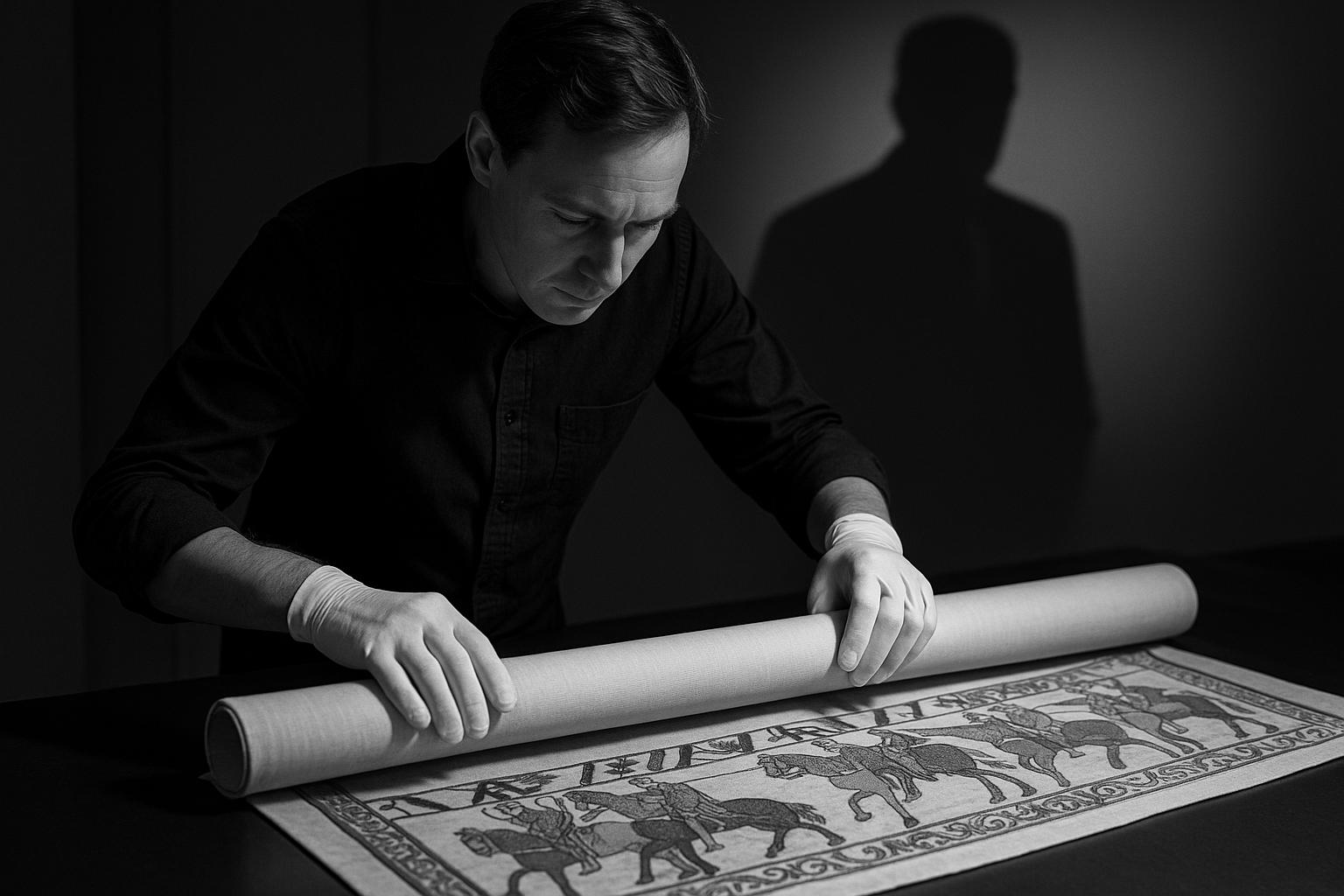The Bayeux Tapestry, the 11th‑century embroidery that chronicles the Norman conquest of England, will be shown in London between September 2026 and July 2027 after an agreement reached by Prime Minister Keir Starmer and President Emmanuel Macron as part of a wider Franco‑British cultural reset. According to reports in The Times, the loan — arranged amid intensive diplomatic talks — proved more complex than a simple transfer of an artefact: French negotiators sought additional concessions, including the possibility of exchanging the tapestry for the Rosetta Stone and proposals to allow French citizens free or reduced admission to the London display, demands that British ministers resisted. The UK government has confirmed the exhibition dates and said further logistical details will follow.
The final arrangement, announced by the British Museum and the UK government, is explicitly reciprocal. The British Museum said the tapestry will be shown in its Sainsbury Exhibitions Gallery in 2026–27, and government statements confirm that items representing the four nations of the UK — notably the Sutton Hoo treasures and the Lewis chessmen — will be lent to museums in Normandy as part of a cultural season in 2027. Officials framed the exchange as offering educational benefits, boosting tourism and helping to rebuild practical cooperation between the two countries after years of fraught relations. Industry analysis has treated the loan as a deliberate piece of cultural diplomacy, designed to underpin a broader political “reset”.
Practical and conservation imperatives were central to the decision to stage the tapestry in London. The Bayeux museum is scheduled to close for a two‑year redevelopment starting in September 2025, and conservators have long emphasised the fragility and technical demands of the embroidery. Media coverage and museum statements say that those conservation constraints, together with detailed logistical discussions between French and British authorities, made the British Museum the most suitable venue while the Bayeux site is refurbished.
Yet the negotiations over access and reciprocity exposed fault lines about ownership, museum autonomy and the symbolism of national treasures. Reports say French negotiators raised the Rosetta Stone as a possible equivalent to the tapestry and pressed for preferential or discounted entry for French visitors to the London showing; British ministers and the British Museum rejected proposals that would cede control over ticketing, arguing that admission policy is a matter for the host institution. The idea of swapping or loaning the Rosetta Stone is not new — it surfaced in public debate during earlier discussions over potential loans — but any such transfer would revive contentious questions about the stewardship of iconic objects.
The UK government named Lord Peter Ricketts as its envoy for the loan, underscoring the high diplomatic profile attached to the deal. Commentators and analyses in the financial and cultural press have interpreted the exchange as emblematic of a strategic effort by both administrations to convert symbolic gestures into renewed practical ties: loans of major objects carry both soft‑power value and concrete benefits for museums and local economies. The British Museum and Parisian partners say they will continue to work on conservation and display plans and that fuller exhibition details will be published ahead of the opening.
For now, the headline is straightforward: a rare medieval narrative will be seen in London in late 2026 while Bayeux is refurbished. What remains unsettled are the thornier questions raised during the talks — how far cultural diplomacy can, or should, involve bargaining over other nations’ crown jewels, and how host institutions will balance national sentiment, access and professional curatorial independence. Museum and government statements promise further information in the months ahead, including how tickets will be managed and what the reciprocal loans programme will look like in practice.
📌 Reference Map:
##Reference Map:
- Paragraph 1 – [1], [4]
- Paragraph 2 – [3], [4], [5]
- Paragraph 3 – [6], [3], [5]
- Paragraph 4 – [1], [2], [7], [3]
- Paragraph 5 – [4], [5], [1]
- Paragraph 6 – [3], [4], [5]
Source: Noah Wire Services
